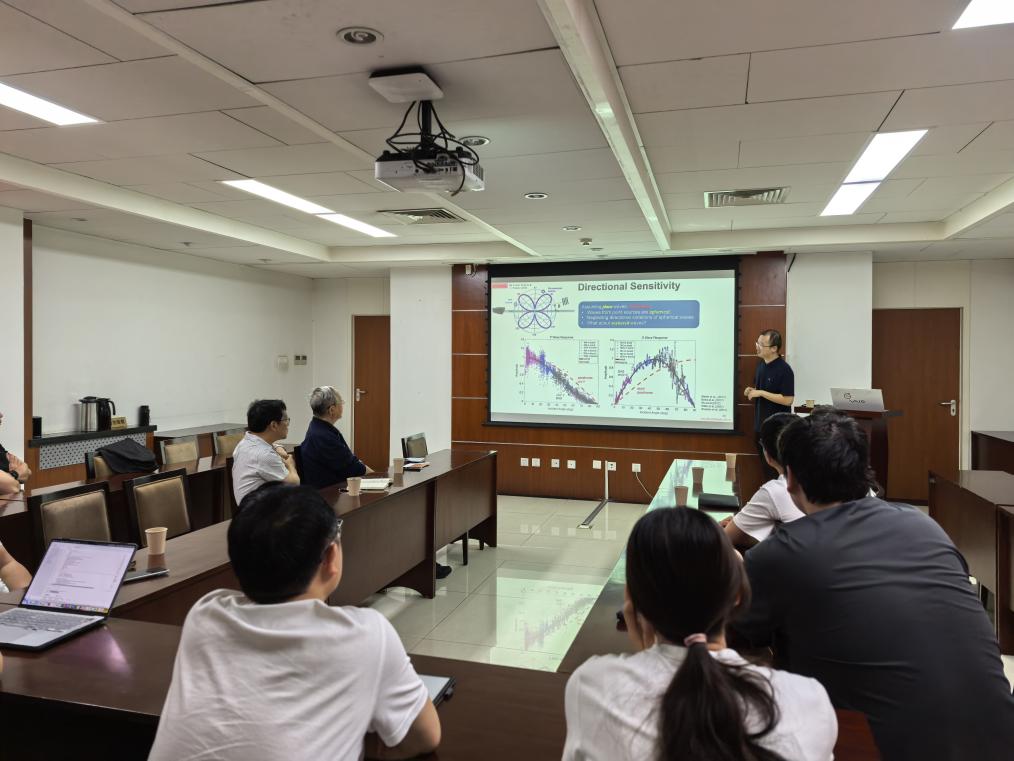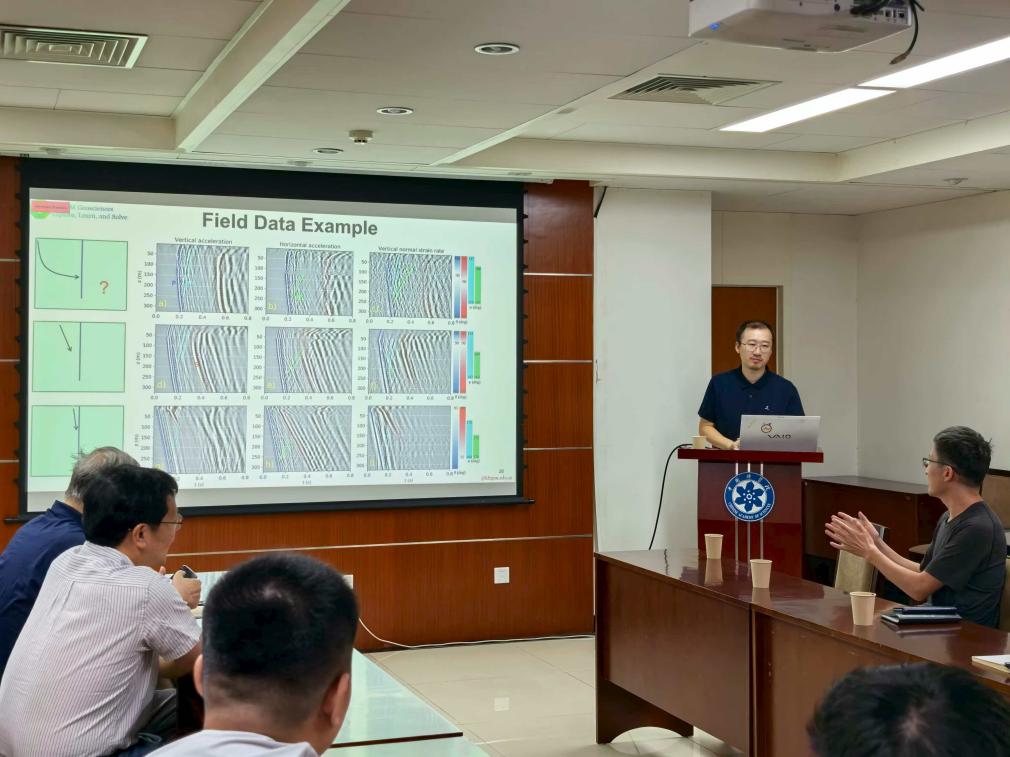On July 7, 2025, Assistant Professor ZHOU Wei from the School of Petroleum Engineering and Geosciences, King Fahd University of Petroleum and Minerals (KFUPM), visited IGGCAS, at the invitation of Professor Zhao Lian-Feng academic exchange and collaboration.
During his visit, Prof. ZHOU delivered a presentationtitled "Radiation and Diffraction Pattern Analyses for DAS Fiber Optic Data and Full-Waveform Inversion." Beginning with an overview of the application of distributed acoustic sensing (DAS) in seismology, he highlighted both the advantages and challenges of using DAS data in full-waveform inversion (FWI). Theoretical analyses and case studies with real data were presented to validate the effectiveness of the proposed methods.
DAS technology offers several notable advantages, including ultra-long sensing arrays (on the order of kilometers), dense spatial sampling (on the order of meters), broadband frequency response, flexible deployment, and relatively low costs.However, it also faces significant challenges such as low signal-to-noise ratios, diverse noise types, and sensitivity to only one component—axial strain along the fiber.
Prof. ZHOU elaborated on the principles of the DAS system, detailing how optical pulses propagate through the fiber, how backscattered lightis recorded by the DAS system, and how strain is measured via phase shift detection. The technology's applications extend to subsurface imaging, carbon capture and sequestration monitoring, vertical seismic profiling, and near-surface investigations.
A key part of the presentation focused on FWI using DAS data. Traditional DAS data processing must account for the Gauge Length (GL) effect, akin to moving-average filter.While inverse filteringcan remove this effect, it may amplify noise and singularities. Prof. ZHOU proposed an alternative approach: reformulating the wave equation to directly invert strain data, thereby minimizing preprocessing and suppressing noise.
Additionally, a novel radiation pattern formula for P- and S-waves was derived based on DAS-recorded axial strain responses to point-source spherical waves. New diffraction patterns describingthe directional variation of singly scattered waves (e.g., PP, PS) were also developed. These theoretical findings were validated against real DAS measurements.
The presentation concluded with a discussionof the potential of combining DAS data with conventional geophone recordings for multi-component full-waveform inversion, examining how different combinations influence inversion accuracy and robustness.
Prof. ZHOU's talk was warmly received by IGGCAS faculty and students, who engaged in extensive discussions on the instrumentation, data quality, and integration of DAS with other seismic techniques to enhancesubsurface imaging accuracy and operational feasibility.

Fig.1 Prof. ZHOU delivering his presentation.

Fig.2 Prof. ZHOU engaging in Q&A with faculty and students.
(Reported by ZHONG Lixin,Key Laboratory of Planetary Science and Frontier Technology, IGGCAS)